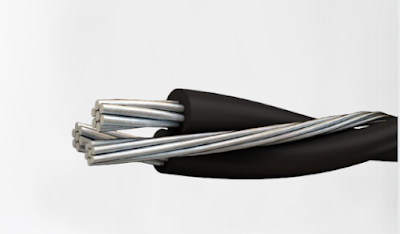What is the Power Transmission Capacity of a 22kV Cable?
Introduction:
In the intricate web of electrical systems, the efficiency of power transmission is a critical factor. One of the key components in this network is the 22kV cable, a powerhouse in its own right. In this blog, we delve into the fascinating world of power transmission, exploring the capacity of a 22kV cable and the crucial role it plays in delivering electricity reliably.Understanding the Basics:
To comprehend the power transmission capacity of a 22kV cable, it's essential to grasp the fundamentals. The "22kV" in the cable's nomenclature refers to its voltage rating – 22 kilovolts. This indicates the maximum voltage the cable can handle without compromising safety and performance.Voltage is a critical parameter in power transmission, as it directly influences the amount of power that can flow through the cable. Higher voltage allows for the transmission of more power over longer distances with minimal loss. Therefore, the 22kV rating signifies the cable's capability to handle substantial electrical loads efficiently.
Factors Influencing Capacity:
Several factors contribute to determining the power transmission capacity of a 22kV cable:1. Conductor Size and Material:
The cable's conductor, typically made of copper or aluminum, plays a pivotal role. Larger conductor sizes allow for the transmission of higher currents, enhancing the cable's overall capacity.
2. Insulation Material:
The insulation surrounding the conductor is crucial for maintaining the integrity of the electrical signal. High-quality insulation reduces the risk of electrical breakdown and enhances the cable's ability to carry power.
3. Temperature Rating:
The temperature at which a cable operates affects its efficiency. Cables with higher temperature ratings can carry more current without overheating, thereby increasing their power transmission capacity.
4. Installation Environment:
The surroundings in which the cable is installed, including factors like ambient temperature and soil conditions, can impact its performance. Proper installation practices are vital for maximizing power transmission capabilities.
The 22kV cable finds widespread applications in various sectors, including industrial, commercial, and utility settings. Its versatility makes it suitable for underground and overhead installations, enabling the efficient transmission of power in diverse environments.Applications and Use Cases:
Key Advantages of 22kV Cables:
1. Efficient Power Transmission:
The 22kV cable's high voltage rating allows for the efficient transmission of power over extended distances.
2. Reliable Performance:
With proper design, materials, and installation, 22kV cables offer reliable and stable performance, contributing to the overall resilience of the electrical grid.
3. Versatility:
These cables are adaptable to different installation environments, making them suitable for a wide range of applications.




Comments
Post a Comment